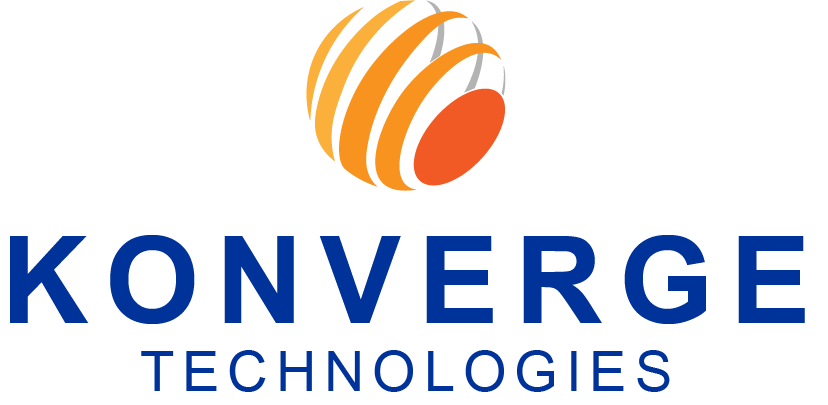
What is Database Management? All you need to know about

Are you aware that efficient database management is the backbone of every successful business? In this age of data-driven decision-making, managing data is more critical than ever before. But what exactly is a Database Management System (DBMS), and how can it help your business?
In this blog, we will discuss what a Database is, the different types of Database Management Systems, and why DBMS is essential for businesses. We will also outline some of the most popular database management tools and why Konverge is the best choice for Database Administration.
What is Database?
A database is a storage that holds a large amount of data. The data stored is used to produce information as and when needed. Generally, a database is nothing but a storage place of data that is of interest to the enterprise.
The functionalities of the database are-
- Creation of the database
- Insertion of data into the database
- Updating data of the database
- Effective retrieval of data from the database
- Securing of data stored in the database
- Deletion of data from the database
Databases contain aggregations of the data record or files, such as sales transactions, product catalogs and inventories, and customer profiles. Typically, A database manager provides users the capability of controlling read/write access, specifying report generation, and analyzing usage.
SQL ( Structured Query Language) is a standard language for making interactive queries from and updating a database and includes IBM’s DB2, Microsoft’s SQL server, and database products from Oracle and SYBASE.
What is Database Management?
A Database Management System (DBMS) is software that controls all access to a database. It is software that stores and retrieves users’ data while considering all the security measures. It consists of a group of programs that manipulate the database. When a request to access the database comes, it examines.
- The request interprets it using some data manipulation language
- External schema converts external-conceptual mapping
- Conceptual schema converts conceptual- internal storage mapping, and
- Internal storage and performs necessary operations to retrieve and store data
The development of a Database management system was to handle some difficulties of typical File-processing systems supported by conventional operating systems. These are-
- Data redundancy and inconsistency
- Difficulty in accessing data
- Data isolation – multiple files and formats
- Integrity problems
- Atomicity of updates
- Concurrent access by multiple users
- Security problems
Over the years, database management software has evolved a lot. From flat files to object-oriented databases, we have experienced and gotten the benefits of modern database management systems. Let us discuss the types of database management systems–
TYPES OF DATABASE MANAGEMENT SYSTEM
- Hierarchical DBMS
- Network DBMS
- Relational DBMS
- Object-oriented DBMS
1. Hierarchical DBMS
In a Hierarchical database, data is organized hierarchically (top-down or bottom-up) format. The data is organized in a tree-like structure. In this model, the data is represented using a parent-child relationship in which parents may have many children, but children have only one parent. They are very simple and fast. Such models are used where the primary focus of information gathering is on a concrete hierarchy. It may be a list of business departments, assets, or people associated with higher-level primary data elements.
2. Network DBMS
In the Network Database Management system, data is organized in a graph which can be accessed through several paths. This allows each child to have multiple parents as well as multiple child records, which can be visualized as a web-like structure of networked records. This model supports many-to-many relationships and can be visualized as an interconnected network of records.
3. Relational DBMS (RDBMS)
Relational DBMS or RDBMS is the most widely used DBMS model. This model portrays the data in the form of rows and columns of the tables. In RDBMS, tables containing data are called relations and are defined by rows (or records), and columns (or attributes) referred to as fields. Each table has a key field that mainly identifies each record. Different tables are related (or linked) on the basis of these records. This provides a visual representation of the data.
4. Object-Oriented DBMS
Data is stored in the form of objects in an object-oriented DBMS. The structure is called classes which display data within it. It defines a database as a collection of objects that stores both data members’ values and operations. The future of database technology is generally perceived to be an integration of the relational and object-oriented database models. These models are also considered modern database management systems.
DATABASE MANAGEMENT TOOLS
- MySQL
- SQL Server Management Studio
- Oracle RDBMS
- Salesforce
- DevOps
- Visual Studio Code
- ESM Tools
- PhpMyAdmin
MySQL– This open-source relational database is easy to use and it’s already included in a number of popular web applications like WordPress.
SQL Server Management Studio– It is a user-friendly graphical tool with a variety of script editors to provide access and management for SQL Server.
Oracle RDBMS- This tool is mostly used in object-relational database management software. It is secure, supports large databases, occupies less space, and reduces CPU time to process data.
Salesforce- Salesforce is the most demanded tool in the market. The solutions can be built based on business and workflow requirements
DevOps- Applying DevOps principles to the database increases software delivery speed and stability. This improves productivity and reduces employee burnout.
Visual Studio Code– This has incredibly easy formatting, cross-OS support, customizable layouts, and dark mode.
ESM Tools- ESM tools offer the best way to manage data. They take into account, not just the database itself, but the workflow, the reporting, and the process automation around that data.
PhpMyAdmin– PhpMyAdmin works well for small organizations.
Why is DBMS essential for your Business?
With Database Management software, businesses can increase their access to data. They can also help end-users to share the data throughout the organizations. As a result, these end users can deliver faster sales and make quicker decisions as they have access to the exact data they need. Here are some of the essential points to know the importance of DBMS for businesses. They are-
- It keeps the business operations running as planned
- It keeps track of customers, data inventory, and employees
- It maintains application and database performance
- It stores and organizes unique and varied types of data
- It automates database processes and procedures
Efficient Database Management with Konverge’s Expert Oracle DBA Services
Looking for a Database Management Company to manage your data? Konverge offers an expert Oracle DBA for your database administration and efficient management. For both onsite and remote database administration, we provide a dedicated primary and secondary DBA. Our remote DBA service is available 24 hours a day, 7 days a week, with a quick response time whenever and wherever you need it.



